By Lindsay Pease
The Red River Valley being a place of extremes is nothing new. But in 2021, we set another weather record. This time, we observed the driest January through September on record at the Northwest Research and Outreach Center (NWROC) in Crookston.
A common light-hearted question people asked me this summer was, “how’s that new drainage project going?” We installed a new subsurface drainage system for one of our fields at the NWROC in October 2019. The project is funded by Minnesota’s Agricultural Fertilizer Research and Education Council (AFREC) and the 4R Research Fund. Two years in, we have experienced the wettest growing season on record followed by the driest. With this post, I wanted to share some first impressions on what we saw out on our drainage plots during the drought, and offer some comparisons between 2020 and 2021.
We grew wheat this year (more on harvest later) after growing soybeans in 2020. One of the first drought-related impacts that I observed was cracks forming in the field. These pictures were taken on June 30:
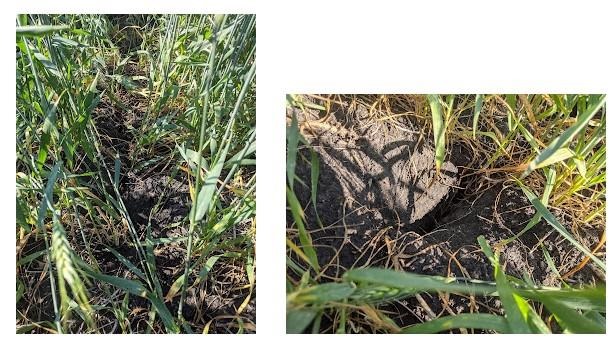
These soil cracks became much more prominent following harvest. One thing that struck me was just how straight the cracks were. The following photos were taken in one of the drained sections of the field on August 16:
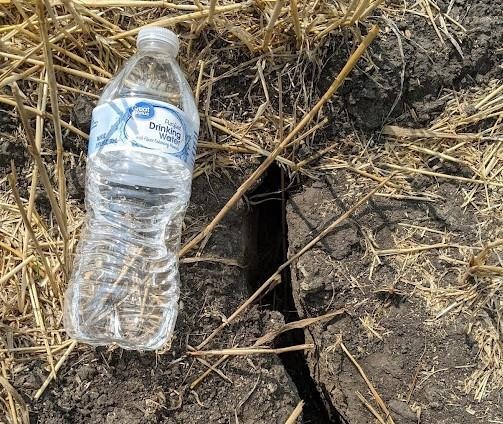
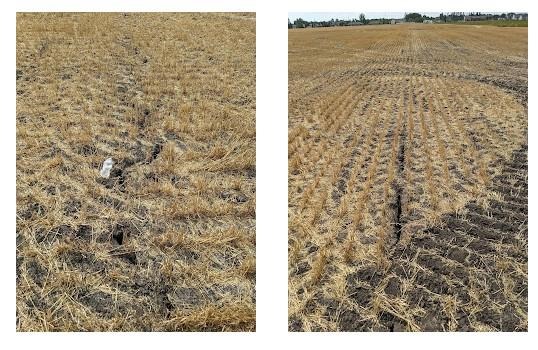
After taking these photos, I thought that the cracking might be worse in the drained plots than in the undrained plots, but it was hard to say for sure. I sent a couple of my student workers out to GPS-mark where they saw cracking, but the cracks were prevalent enough throughout the field that the cracking was not necessarily worse in the drained plots.
This year, as you can imagine, wheat yields were down a lot across the NWROC fields compared to 2020. Nevertheless, yields were even lower in the drained sections of the field compared to the undrained sections.
NWROC average spring wheat yields (2018-2021)
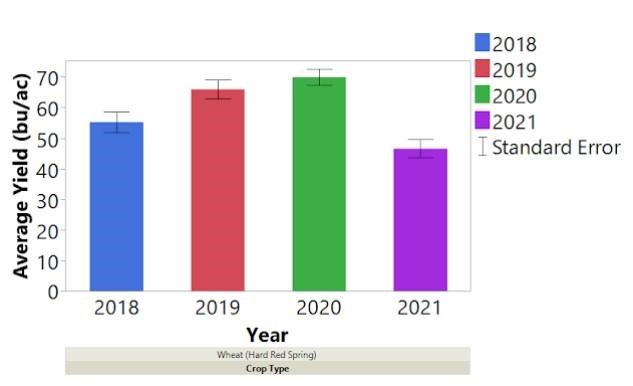
Spring wheat yield from drained (highlighted in white below) and undrained plots in 2021
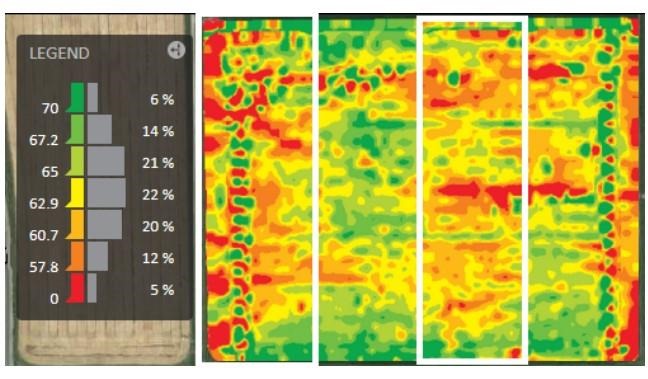
One’s first reaction to this might be that the presence of drainage dried the soil too much. We actually did start out with less moisture in the soil profile at the beginning of the growing season in the drained plots due to the drainage that happened in the late summer and early fall.
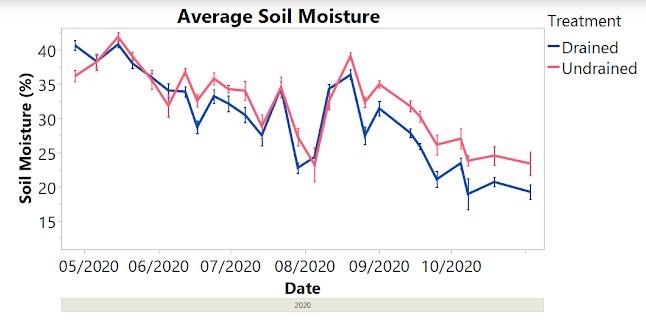
But even though we ended the season with lower moisture in the drained plots, we had little to no rain and little to no moisture in any plots by the end of the 2021 season.

My opinion is that our lower yields this year was less a result of over-drying the soil and more about the effect of the ground disturbance and compaction that came with the drainage installation.
In 2020, our soybean yields were similar between the drained and undrained sections, even though we had a very wet spring and summer. With a brand new drainage system and plenty of rain, I expected that yields would be better in the drained sections than the undrained section. This does not appear to be the case for yields in 2020. I think this supports my hypothesis that the ground disturbance from drainage installation may be hurting our yields in the short term.
Soybean yield from drained (highlighted in white below) and undrained plots in 2020
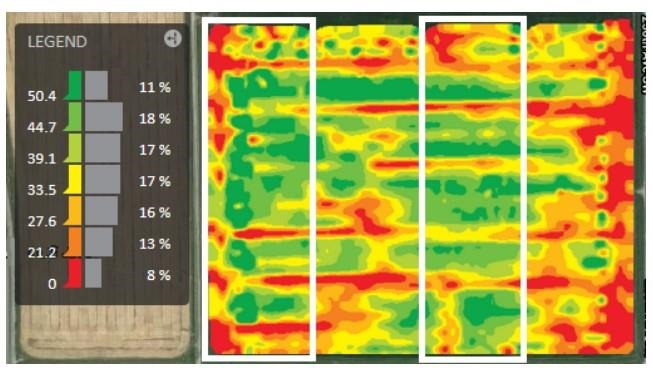
We will be continuing to monitor soil physical properties in the plots and yields over time to see if my initial hypothesis is correct, and to see how long it takes for the soil to rebound from the installation.
Source : umn.edu